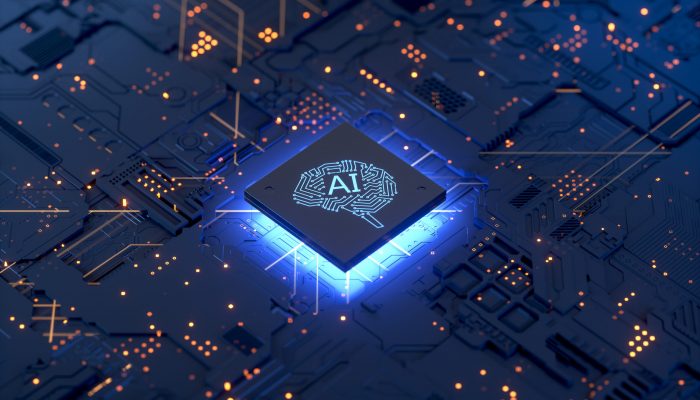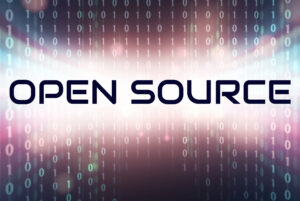Artificial Intelligence (AI) and Machine Learning (ML) have become pivotal technologies in the video game industry, transforming game developers design, create, and optimize their video games.
These technologies enhance everything from the behaviour of non-player characters (NPCs) to the personalisation of player experiences, making them integral to modern game development. With AI’s ability to adapt and learn through deep learning, gaming landscapes are continuously evolving, offering fresh and challenging experiences to players.

Table of Contents
Before we look closer into AI and ML in game development let’s look at the definition, capabilities and application of each and compare their differences:
Artificial Intelligence (AI) | Machine Learning (ML) | |
Definition | AI refers to the simulation of human intelligence in machines that are designed to think and learn like humans | ML is a subset of AI that involves using data and algorithms to enable machines to improve their performance on tasks through experience |
Capabilities | Include problem-solving, perception, decision-making, and natural language processing | Includes pattern recognition, predictive analytics, and data-driven decision making |
Application | Used to create intelligent NPCs, enhance game mechanics and improve player interactions | Used for dynamic difficulty adjustments, procedural content generation and player behaviour analysis |
Applications of AI and ML in Game Development
Building on the foundational understanding of AI and ML, we can explore how these technologies are applied in game development. The integration of AI and ML has revolutionised game testing, content creation, and interaction design.
Dynamic Difficulty Adjustment
Dynamic difficulty adjustment is one of the most impactful applications of AI in game development. AI has the ability to analyse a player’s skill level and player behavior in real-time, adjusting the game’s difficulty to ensure it remains challenging yet enjoyable; it can prevent frustration from overly difficult levels and boredom from levels that are too easy. This approach helps maintain player engagement, and overall satisfaction with the game.
An example of this application can be seen in the popular game FIFA. In FIFA, machine learning is used during the Career Mode to analyse player performance and adjust the opponent’s AI. For instance, if a player consistently performs well the ML algorithms may increase the tactical complexity and responsiveness of the opposing teams, making matches more challenging. Alternatively, if a player is struggling the game can adjust to provide more balanced and accessible gameplay.
Procedural Content Generation (PCG)
Procedural content generation involves using AI and ML algorithms to create game content (levels, landscapes, items) automatically. This technique allows for the creation of vast and unique game worlds without requiring extensive manual input from developers. PCG ensures that each player’s experience is distinct which offers endless possibilities and replay value. This automation of content creation not only saves time but also adds a layer of uniqueness to each gameplay experience.
No Man’s Sky is a great example of PCG. Procedural generation is used to create a virtually infinite universe of unique planets and ecosystems. Each planet in the game is generated by algorithms, the procedural generation system creates unique terrain, flora, fauna and weather patterns in real-time, which means no two players have the same experience. This approach allows for an expansive and diverse game world that encourages exploration and discovery.
Non-Player Character (NPC) Behaviour
AI-driven NPCs exhibit realistic and complex behaviours which makes interactions with players more engaging and challenging. Advanced AI algorithms enable NPCs to make decisions based on play actions and environmental factors, leading to more immersive and unpredictable gameplay. This level of sophistication in NPC behaviour enhances the depth and realism of the game, in turn making the experience more compelling for players.
In The Last of Us Part II, for example, NPCs use AI to react dynamically to player’s actions. NPCs can communicate with each other, formulate strategies, and adapt to the player’s tactics. During combat, if a player is detected by an NPC, that NPC can alert nearby allies who will then coordinate their movements to flank and trap the player. This creates a lifelike and responsive gaming environment making interactions with NPCs more meaningful and adds a layer of strategic depth to the game.
Player Behaviour Analysis
Machine learning algorithms analyse player behaviour to provide insights into engagement, preferences, and potential churn. This data helps developers refine gameplay and marketing strategies to better meet the players’ needs and enhance retention, thus increasing player satisfaction and loyalty. This analytical approach allows for continuous improvement and personalisation of the gaming experience.
Games like PUBG use ML to analyse player interactions and tailor experiences accordingly. By examining patterns in player behaviour, the game can adjust elements such as matchmaking, content recommendations, and in-game events to better suit player preference ensuring a more engaging and satisfying experience.
Fraud Detection
Ensuring a fair and secure gaming environment is critical, and AI and ML play a significant role in detecting and preventing cheating, hacking, and fraudulent activities. AI systems can monitor player behaviour and identify anomalies that may indicate cheating. This ensures that all players have a fair experience and maintains the integrity of the game.
For instance, Riot Games uses machine learning in League of Legends to identify toxic behaviour and prevent in-game fraud. By analysing chat logs and player actions the AI can detect and address issues such as cheating and boosting, as well as offensive language or unsportsmanlike conduct. The AI can then take appropriate actions such as issuing warnings or temporary bans.
Real-Time Translation
ML algorithms provide real-time translation of in-game text and voice chat which enables seamless communication among players from different linguistic backgrounds. This feature is particularly beneficial in multiplayer games, where effective communication is key to teamwork and success. Real-time translation enhances the social aspect of gaming, making it accessible to global audiences and encouraging diverse player interactions.
Minecraft is a great example of this. In its multiplayer serves, players from all over the world come together to build, explore, and collaborate, which makes it important for players to be able to discuss strategies, share resources and coordinate actions. With real-time ML-based translations a player speaking Spanish can seamlessly communicate with another speaking English, ensuring that instructions, ideas and feedback are clearly understood by everyone.
How AI and ML will revolutionise the way you develop your games
As we’ve seen, AI and ML are already making significant contributions to game development, however, their potential extends far beyond the current applications. These technologies are set to revolutionise the industry even further, driving advancements that will shape the future of gaming. But how is this going to impact your game development in the future?
Efficiency and Cost Savings
AI and ML are also revolutionising the efficiency of game development. By automating repetitive and time-consuming tasks developers have time to focus on the more creative aspects of game design. This not only speeds up the development process but also reduces costs, making it possible to produce high quality games with fewer resources. Some examples of this are:
- AI-drive simulations and automated quality assurance (QA) testing can identify bugs and performance issues more quickly and comprehensively than manual testing
- AI tools can assist in asset creation, generating textures, models and animations, reducing time and effort required from human artists
- Automating the creation of game environments, levels, and quests allows for faster development cycles and provides fresh content without the need for extensive manual input
Innovation and Creativity
AI-driven tools enable developers to experiment with new game mechanics and features. Enhances procedural generation techniques allow for the creation of unique and expansive game worlds that were previously unimaginable. These techniques enable developers to push the boundaries of creativity which offers players experiences that are both novel and immersive.
One exciting area of innovation is the development of AI-driven storytelling, where AI analyses narrative structures and player choices to create dynamic storylines that evolve based on player actions. This leads to games with branching narratives that offer a multitude of possible outcomes. This provides players with a deeply engaging and personalised experience.
Challenges and Limitations
While AI and ML offer transformative potential for game development, they also come with challenges and limitations that developers must navigate. These challenges can impact the effectiveness and implementation of AI and ML technologies in gaming.
High Computational Requirements
Training and deploying AI models requires extensive computational power and specialised hardware. This can be costly and sometimes inaccessible for smaller development teams.
Ethical Use of AI
Ensuring the ethical use of AI, particularly in areas such as player data privacy and bias in ML algorithms is a critical challenge. AI systems rely on large datasets, which can include sensitive player information. Developers must implement robust data privacy measures and address biases within their AI models to maintain player trust and comply with data protection regulations such as GDPR and CCPA.
Balancing AI Complexity with Gameplay Enjoyment
One of the critical design challenges is finding the right balance between sophisticated AI behaviour and enjoyable gameplay. Overly intelligent AI can detract from the fun by making games too difficult or predictable. Developers must carefully tune and playtest AI-driven features to ensure they enhance the overall game design without overshadowing the player’s experience.
Seamless Integration into Development Workflows
Integrating AI into existing frame development workflows without disrupting the creative process is another significant challenge. The introduction of AI tools and processes can require substantial changes to established workflows, potentially impacting the efficiency and creativity of development teams. Ensuring that AI tools are user-friendly and compatible with existing practices is essential for successful integration.
Future Trends
Advanced NPCs and Autonomous Characters
The development of NPCs that learn and adapt over time is one of the most exciting advancements of AI for game development. Future games will feature characters that evolve based on player interactions which will lead to unique and dynamic gameplay experiences. These NPCs will analyse player behaviour and adjust their actions accordingly. For example, in an RPG, an NPC might remember the player’s past choices and adapt its behaviour in future encounters, offering a personalised evolving storyline.
Increased Personalisation
AI and ML will continue to enhance the use of predicting analytics to offer personalised game recommendations and content. The prolonged analyse of player data will allow even greater emphasis on personalisation. For instance, a game might adjust its difficulty level in real-time based on a player’s skill and preferences, adapt in-game events, or recommend new games and expansions that align with their playstyle and interests.
Integration with Other Technologies
The combination of AI with virtual reality (VR) and augmented reality (AR) will create more immersive and interactive gaming experiences. AI-driven characters in a VR game could respond to player’s gestures and voice commands making gameplay more natural and engaging. Additionally, AI can be used to improve multiplayer matchmaking and community management, ensuring fair and enjoyable gameplay for all participants. By leveraging AI, VR and AR, developers can push the boundaries for what is possible in gaming, creating experiences that are more immersive and interactive than ever before.
Final Thoughts
The future of game development is very exciting, with AI and ML at the forefront of this transformation. Developers should be looking to explore and integrate these technologies into their projects, staying updated with the latest advancements to remain competitive. By embracing AI and ML developers can create more immersive, dynamic and engaging games that cater to the diverse preferences and needs of players. As the gaming industry continues to evolve, the possibility for innovation and creativity are boundless, promising an exciting future for both developers and gamers.
At T-Plan, we’re at the forefront of incorporating advanced AI and ML into our testing strategies. If you’d like to learn more about how we can take your automation testing to the next level, check out our free demo of T-Plan using the link below.


